Their Time To Shine
The Clear Cut’s Olivia Landau and Kyle Simon on how they turned an
“accidental side hustle” into a booming natural diamond jewelry business.
Photographed by: Vincenzo Dimino
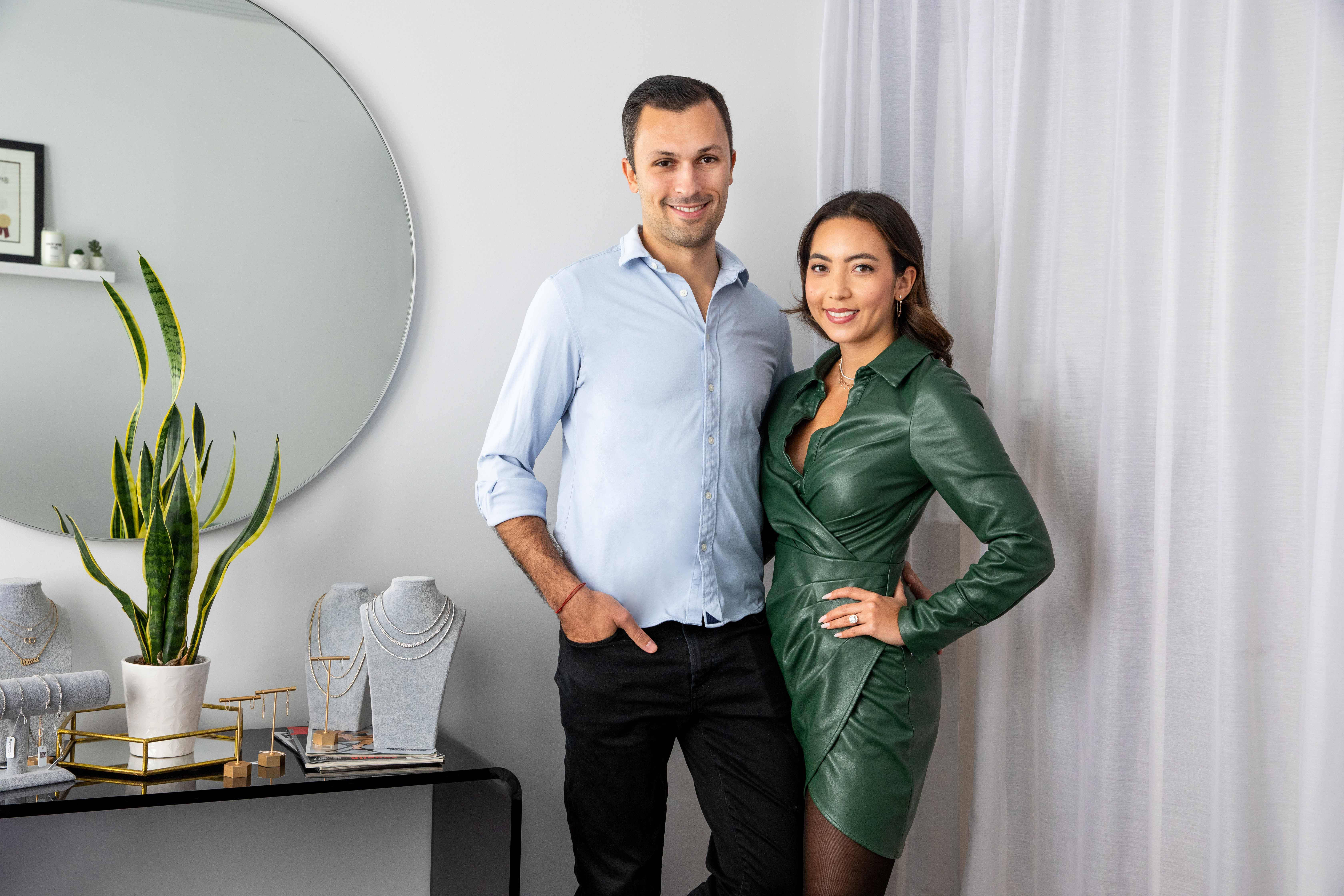
Perched high above the Diamond District in New York City sits The Clear Cut’s jewel box of an office. On a clear day, the space is so bright from the sun refracting off the brand’s prismatic natural diamond pieces that Olivia Landau and Kyle Simon, the business’s married co-founders and top execs, will often pull down the blinds.
Landau and Simon’s sparkly love story is worthy of a Nancy Meyers-helmed romcom. It began, essentially, on the subway. In 2013, they were both attending the Gemological Institute of America (GIA) in New York. Landau took an interest in Simon and followed him to the F train after class to strike up a conversation. When Landau continued to chat, multiple stops in the wrong direction, Simon took note.
They bonded quickly and in the years that followed that Kismet encounter they graduated GIA (she as a gemologist and he as a diamond specialist) and persevered through an extra long-distance relationship. Simon started a fair-trade diamond mining company in West Africa’s Sierra Leone—he had lived there while working in local politics and had earned the trust of the community—and Landau developed a firsthand appreciation for well-crafted engagement rings as a salesperson at the Tiffany & Co. flagship on Fifth Avenue. By 2015, Simon had returned to New York and enrolled in Columbia Business School and Landau had taken a position at a diamond wholesaler. It was around this time that The Clear Cut brand began to crystallize after Landau was repeatedly commissioned by Simon’s business school friends to make engagement rings for future fiancées.
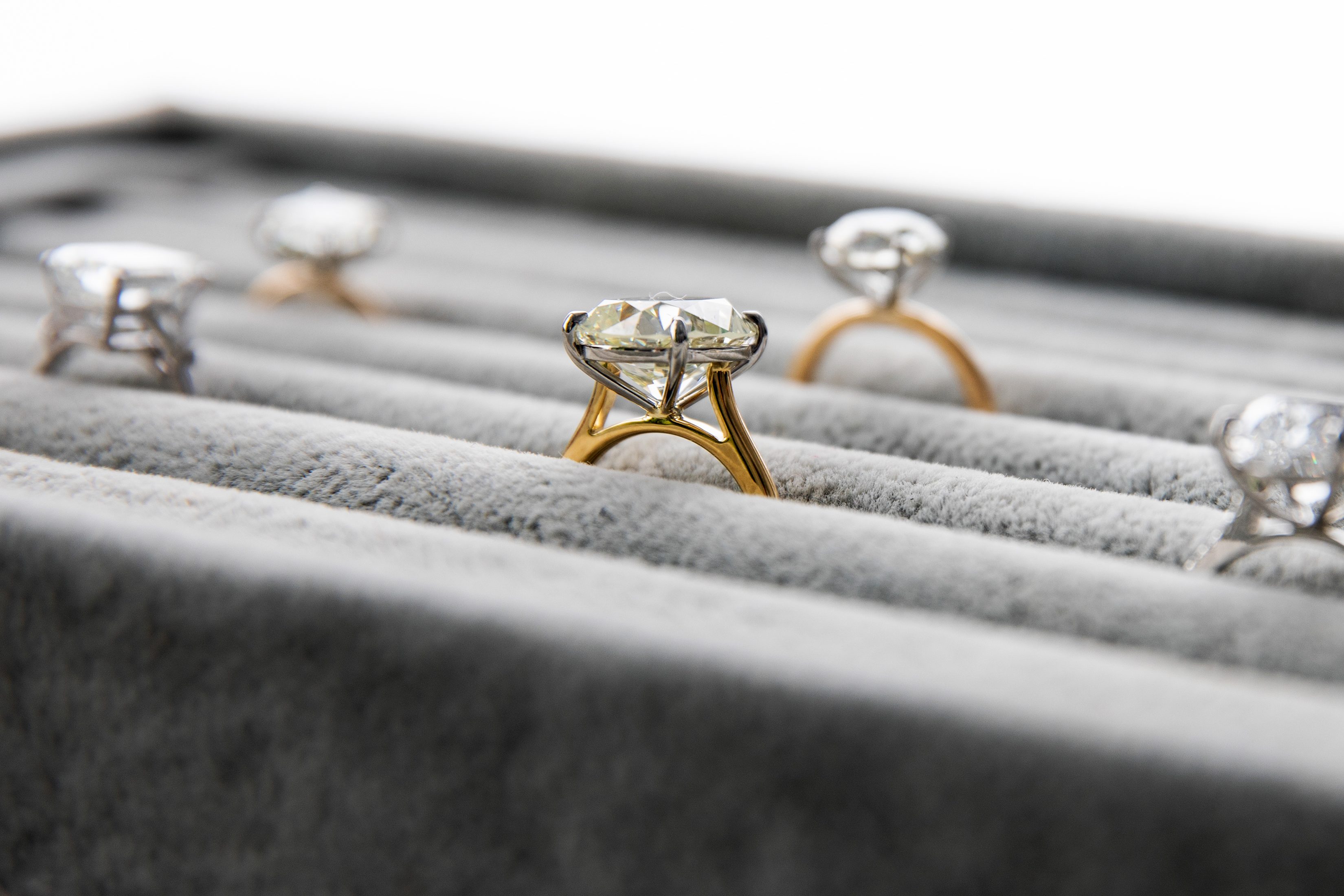
“It turned into this accidental side hustle,” says Landau. “I was running back and forth in the Diamond District shipping out hundreds of thousands of dollars of rings [that I had designed]. Kyle pointed out, ‘Oh, there must be a white space in the market if people are trusting you with their life savings.’”
Worth noting is that Landau is a fourth-generation jeweler. Her great-grandfather, grandfather, and father were all diamond cutters and dealers based in Antwerp, Belgium. Eventually, her father moved to the United States and met her mother, who is originally from Taiwan. They settled in New York when Landau was four years old and opened an antique jewelry business working with mostly private clients. “Their dream was for me to work in corporate America and not have to eat what you kill,” jokes Landau.
Up until that point, Landau had hoped to work at a fashion magazine and even interned at Teen Vogue, but when no media opportunities arose, she attended GIA to “buy herself some time.” As the story goes, she fell in love not only with diamonds and gemstones but also with her future husband. (The pair married in the summer of 2019.)
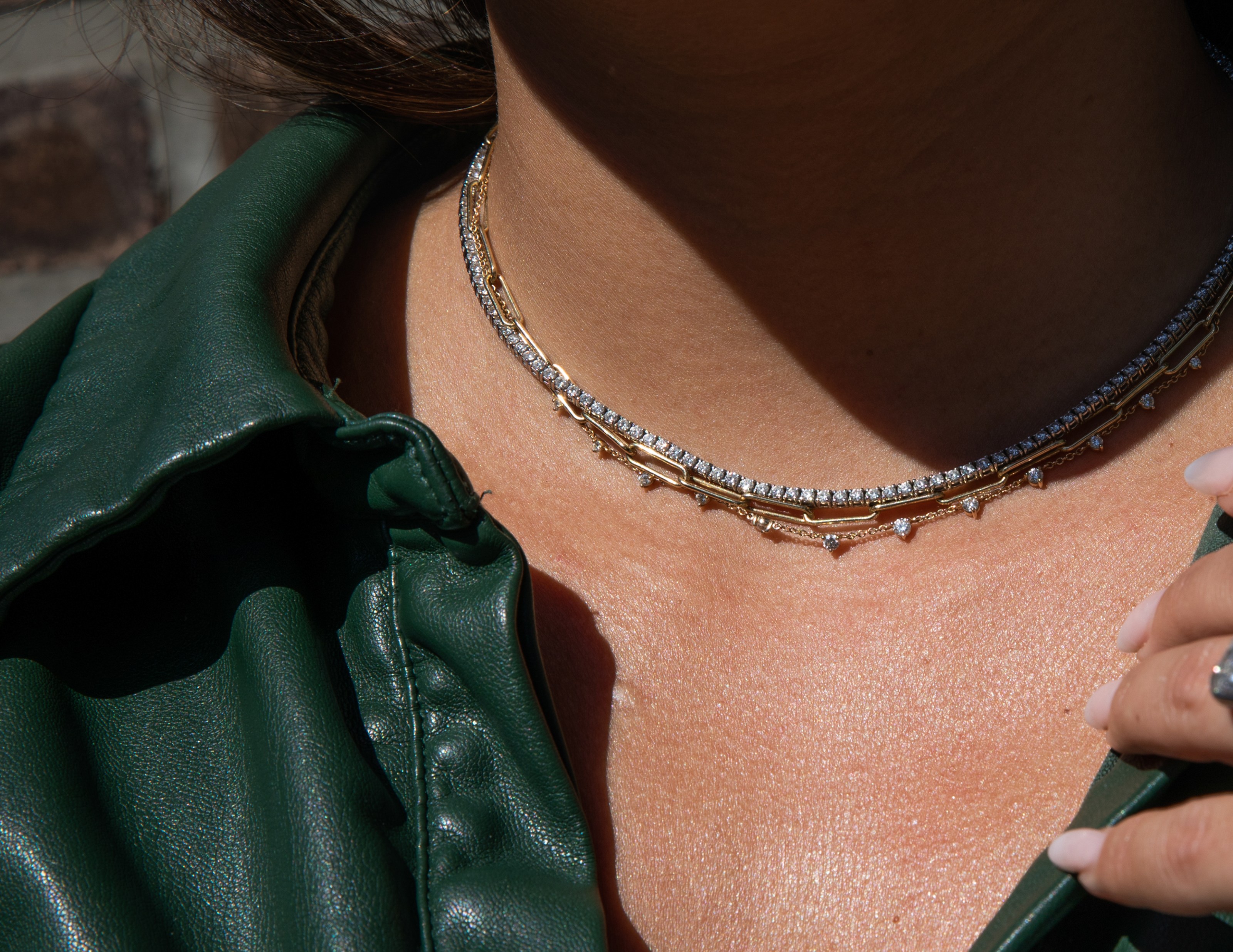
Landau initially started The Clear Cut as a blog and educational resource to guide prospective customers through the complicated process of buying an engagement ring. “Most people didn’t know the first thing about buying a diamond, so I started The Clear Cut for our friends to read before coming to work with me,” she says. “Then I started posting on Instagram and that’s when strangers started following the account, asking if I could help create their rings.”
Landau still oversees The Clear Cut Instagram account, which now boasts 166,000 followers, and responds to most of the DMs. Along with posting informational videos and spotlighting the engagement stories of Clear Cut customers, Landau also includes fun bits like Japanese gel manicure tutorials and the best nail shades for brides.
With Landau’s social media savvy, Simon’s business acumen, and a shared vision to modernize the antiquated industry, the couple officially expanded The Clear Cut blog to include e-commerce in 2018, with initial pieces being sold via Instagram. Simon admits that having that direct-to-consumer connection was invaluable but also “very unscalable.” So they hired a chief technology officer and built a custom content management system that made the remote buying process more user-friendly. “Much of this industry is still conducted via pen and paper, it’s old school,” says Simon. “Our gemologists can talk to customers, analyze diamonds, and the rest of the job is automated or tech-assisted.”

“We will hunt down
the exact diamond
you want, wherever
it is in the world,
and get it for you.”
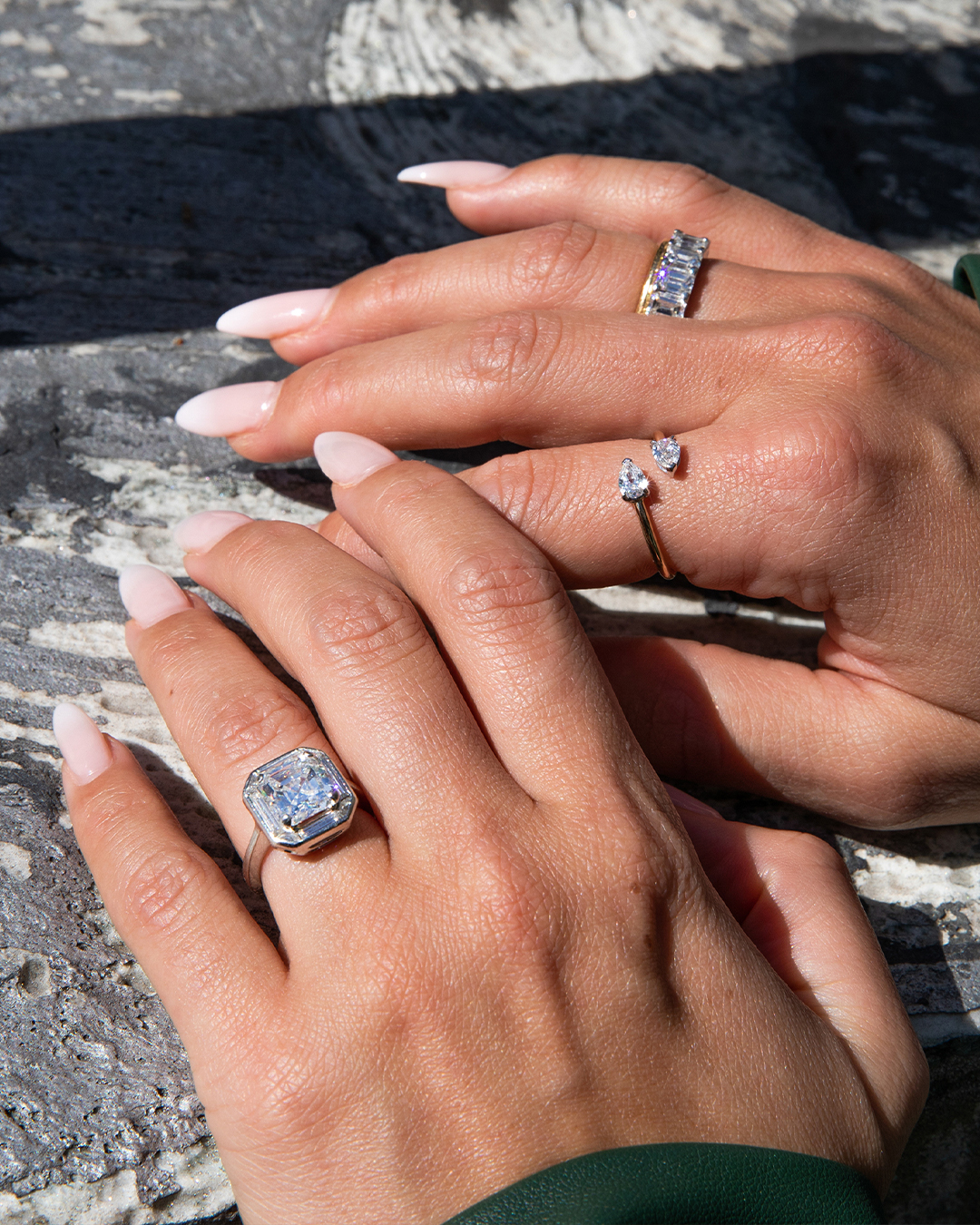
Olivia’s engagement ring, two-stone ring and wedding bands
That ability to constantly tweak and update the platform is The Clear Cut’s “special sauce,” says Simon. Last year the company started offering NFTs that store the historical data of their customers’ precious gems. It was an innovation born out of necessity when Landau went to get her wedding ring insured with an antique diamond that was passed down from her grandmother.
“She had lost the GIA paperwork and had to open the ring, take the diamond out of the setting, send it to GIA, and get it re-certified,” says Simon. “Now with our NFT, we have an API [application programming interface] with GIA where it gets sent directly to them. They authenticate what the diamond is and who it is from. Your appraisal, and any alterations to the diamond, are all on that blockchain. Plus, people can know the exact story of the ring and share it over time.”
Simon admits that there was more enthusiasm for the project before the recent cryptocurrency crash, but whereas other luxury houses (like Tiffany & Co.) offered NFTs to purchase goods, The Clear Cut’s NFT aims to fill a functional need. “There is still a lot of interest because of the digitization of your experience,” he says.
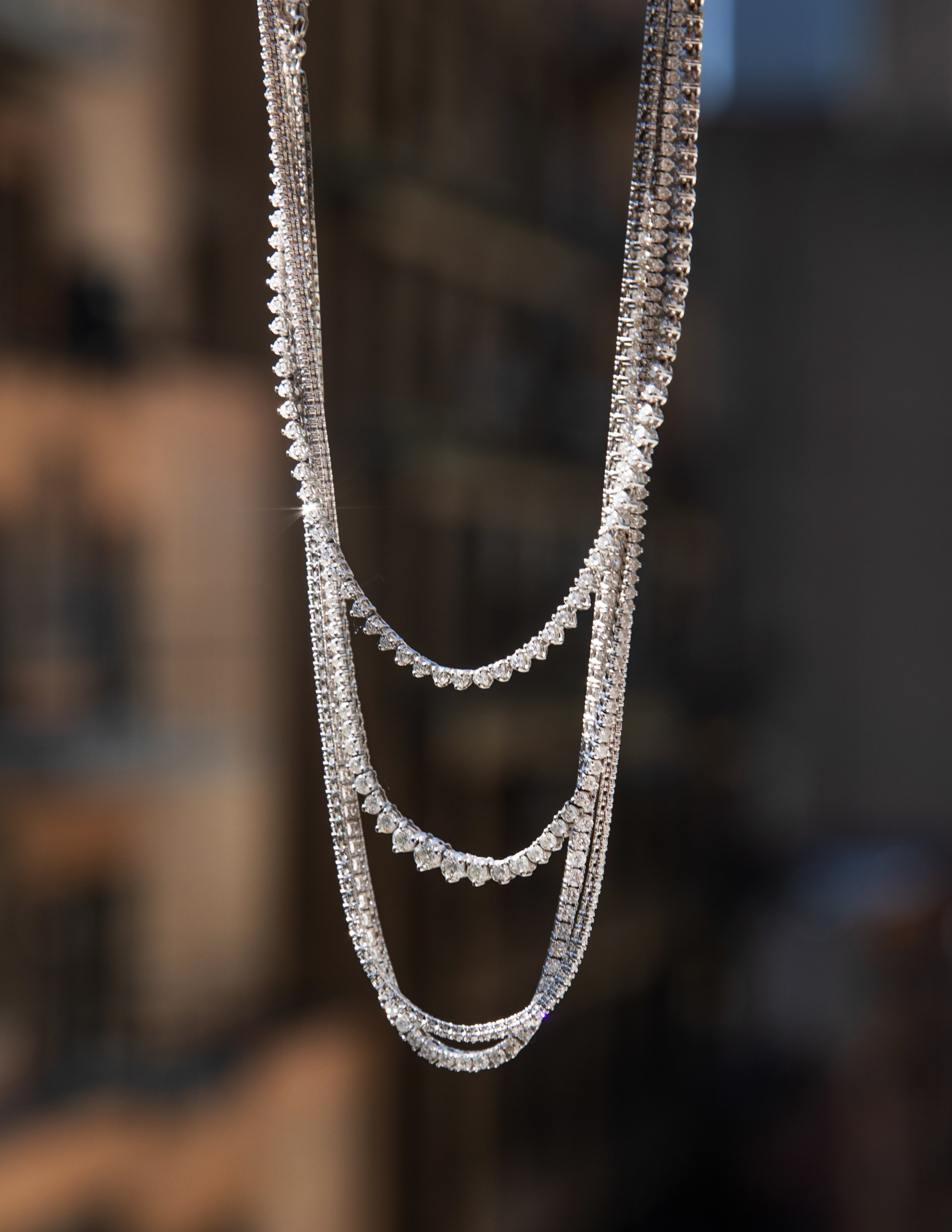
The couple is also passionate about debunking the myths about laboratory-grown diamonds. While jewelry with lab-grown stones has gained in popularity as of late, Landau equates it to the “fast fashion version of the diamond industry.” As a trained gemologist, witnessing these artificial baubles being promoted in the same space as natural diamonds is deceiving. “[The lab-grown movement] had a great marketing game out of the gate,” says Landau who points out that lab-grown diamonds are mass-produced in unregulated facilities in factories in China and India, not ethically sourced from mines that give back to the community.
“It’s mimicking a natural phenomenon that took billions of years to create using fossil fuels,” adds Simon. “Making CVD lab-grown diamonds requires methane.”
There is also a disparity in value, and potential buyers might not know the difference. “Lab-grown diamonds are in infinite supply,” says Simon. “Ultimately [consumers] need to know that they are being charged $250 per carat today, it will probably be $50 in a few years.”
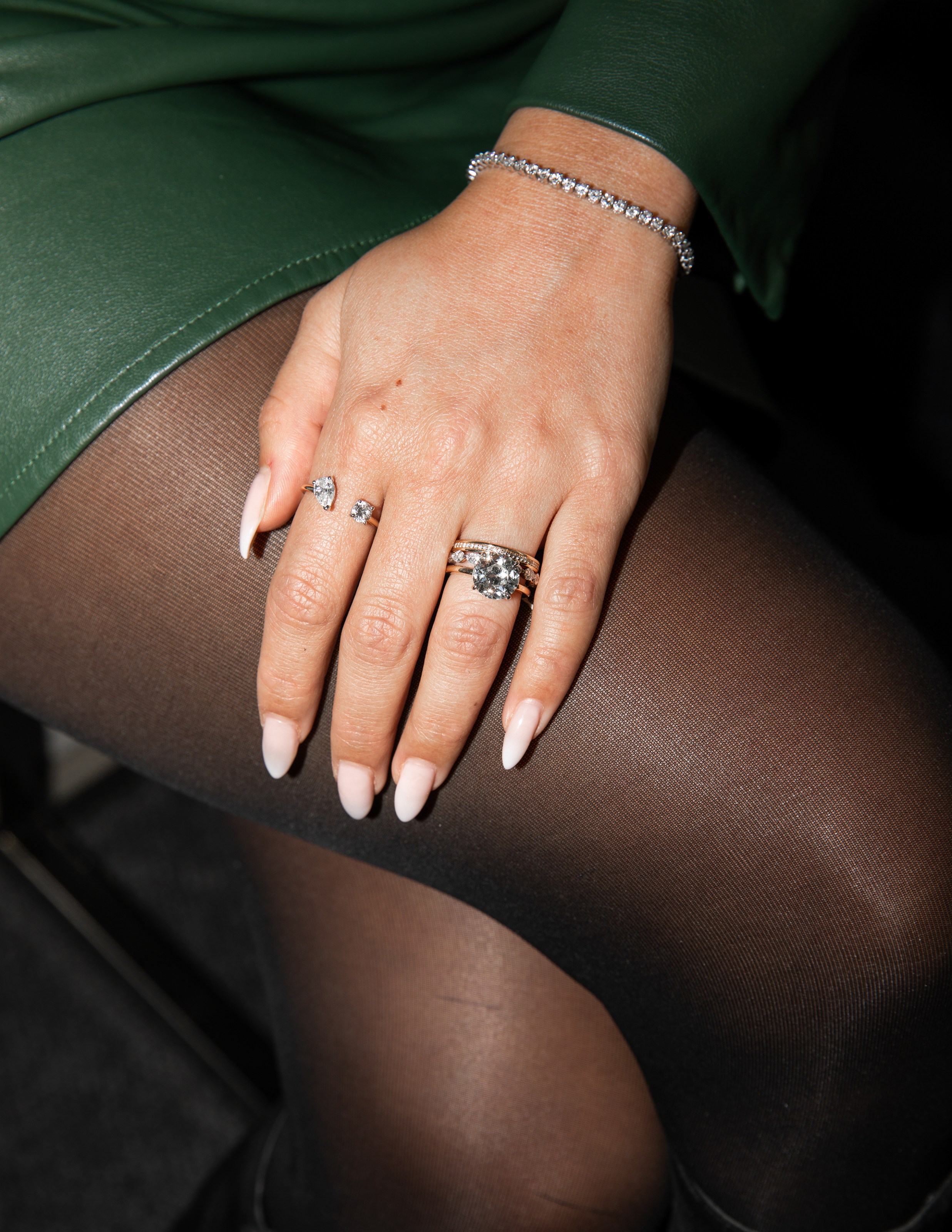
Earlier this year, Landau created a TikTok video to point out this very issue, which quickly garnered over a million views. “[The video] was about how it sucks if you bought a two carat lab-grown diamond last year for thousands of dollars and now it’s worth $600,” she says. “It probably lasted three seconds but people started freaking out. Commenters accused me of lying so I documented my journey of buying a two carat lab-grown diamond for $600 just to prove a point.”
This led to a new initiative, launched this past February, where clients spending anywhere from $10,000 to $20,000 on their Clear Cut engagement ring are offered a free lab-grown diamond to be applied as part of a decoy travel ring. In the past, The Clear Cut would honor these types of requests using cubic zirconia as the synthetic stone. Landau and Simon believe that the best-case scenario for lab-grown stones is to have them replace CZ rather than natural diamonds.
“When you’re talking to a jeweler who is trying to charge you $10,000 for something that the other jeweler is giving to you for free, it applies some pressure,” says Simon.
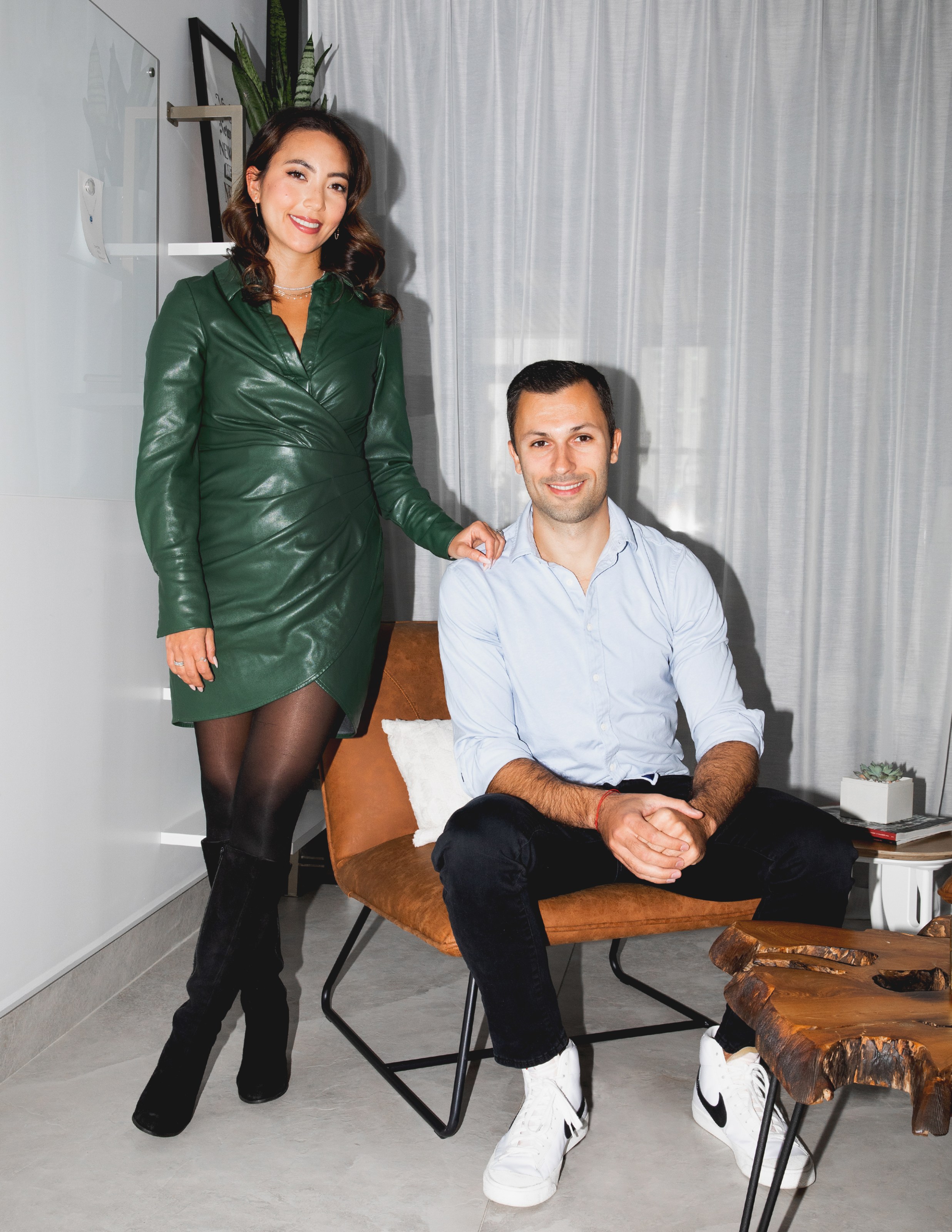
And while engagement rings are still The Clear Cut’s main source of revenue, it is the seasonal collections that drive the most traffic. In keeping with her usual strategy of harnessing the power of social media to her advantage, Landau designs the pieces based on what is trending or being requested by repeat customers. Not surprisingly this accessible approach to luxury has worked. Landau and Simon share that they will occasionally receive online orders of up to half a million dollars. And that gleaming midtown office? A result of The Clear Cut’s year-over-year growth.
Their newest offering is the new Chelsea Chain Tennis collection, which launched in April and is comprised of five new SKUs including a delicious and highly wearable tennis necklace that comes in two different lengths. And this past May, the brand launched its new wedding band styles just in time for engagement season. Custom orders also play a big part in The Clear Cut’s business and if there is a certain natural diamond you’re looking for, the co-owners are determined to find it. “We will hunt down the exact diamond you want, wherever it is in the world, and get it for you,” says Simon.
And while there is a certain subversiveness to the way The Clear Cut couple is upending the industry, at their core, they are two people in love doing something that they love, and what could be purer than that? “I thought it would be nice to make some rings on the side for fun,” says Landau of her initial foray into jewelry design. “But I never expected to have our own business or work together. It’s the best.”
